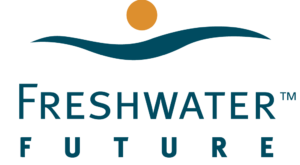October 4th – All About Water Convening, Benton Harbor
The All About Water Steering Committee hosted their first in-person convening since their 2019 convening in Flint. Over 80 online and in-person participants throughout the Great Lakes region showed up in Benton Harbor, Michigan to talk about water issues and strategies for how to address these issues. The one-day conference covered a variety of topics concerning water affordability, toxins, state revolving funds, and privatization. Keep an eye out for more information and videos of the event in next week’s update.

Agricultural Pollution and Harmful Algal Blooms Updates:
Michigan Supreme Court to Rule on Manure Spreading Case
Environmental advocates, including Freshwater Future, filed a “friend of the court brief” requesting the Michigan Supreme Court reverse an Appeals Court ruling on permits for manure spreading. The Michigan Department of Environment, Great Lakes, and Energy updated manure spreading permit requirements for large livestock farms, known as CAFOs (combined animal feedlot operations), after pollution from farms violated water quality standards. Because permits are not rules but licenses, they are subject to change as required by water quality standards. Upholding the Appeals Court ruling could jeopardize Michigan’s environmental protection efforts and permanently harm water quality. The Supreme Court’s decision in this case will have far-reaching implications for the future of our freshwater.
Ohio’s Weak Plan to Reduce Harmful Algal Blooms Approved by U.S. Environmental Protection Agency
A plan developed by the Ohio Environmental Protection Agency to reduce total phosphorus pollution in the Maumee River by setting a total maximum daily load (TMDL) of the nutrient was approved by the U.S. Environmental Protection Agency. Unfortunately, the plan is inadequate and ignores the science that shows the focus should be on dissolved reactive phosphorus – the pollution generated by CAFOs, not total phosphorus. After decades of investment and encouraging agricultural producers to voluntarily reduce pollution, Lake Erie is still plagued with harmful algal blooms, with a current bloom covering 280 square miles. Freshwater Future believes the plan lacks what is really needed: regulations on discharges from agricultural operations.
Thank You – Freshwater Future’s Walk, Paddle, and Roll Exceeds Goal!
Your donations to the Freshwater Future’s Walk, Paddle, and Roll raised over $8,000 for clean, safe, and affordable water. The Freshwater team of board and staff cleaned up parks, hiked the Adirondacks and the Picture Rocks lakeshore, and even gave up using a car–all to earn your donations. Thanks to your support, we will continue our work to ensure people have affordable water, communities have safe drinking water, and that our source waters–lakes, rivers, and groundwater remain healthy.








